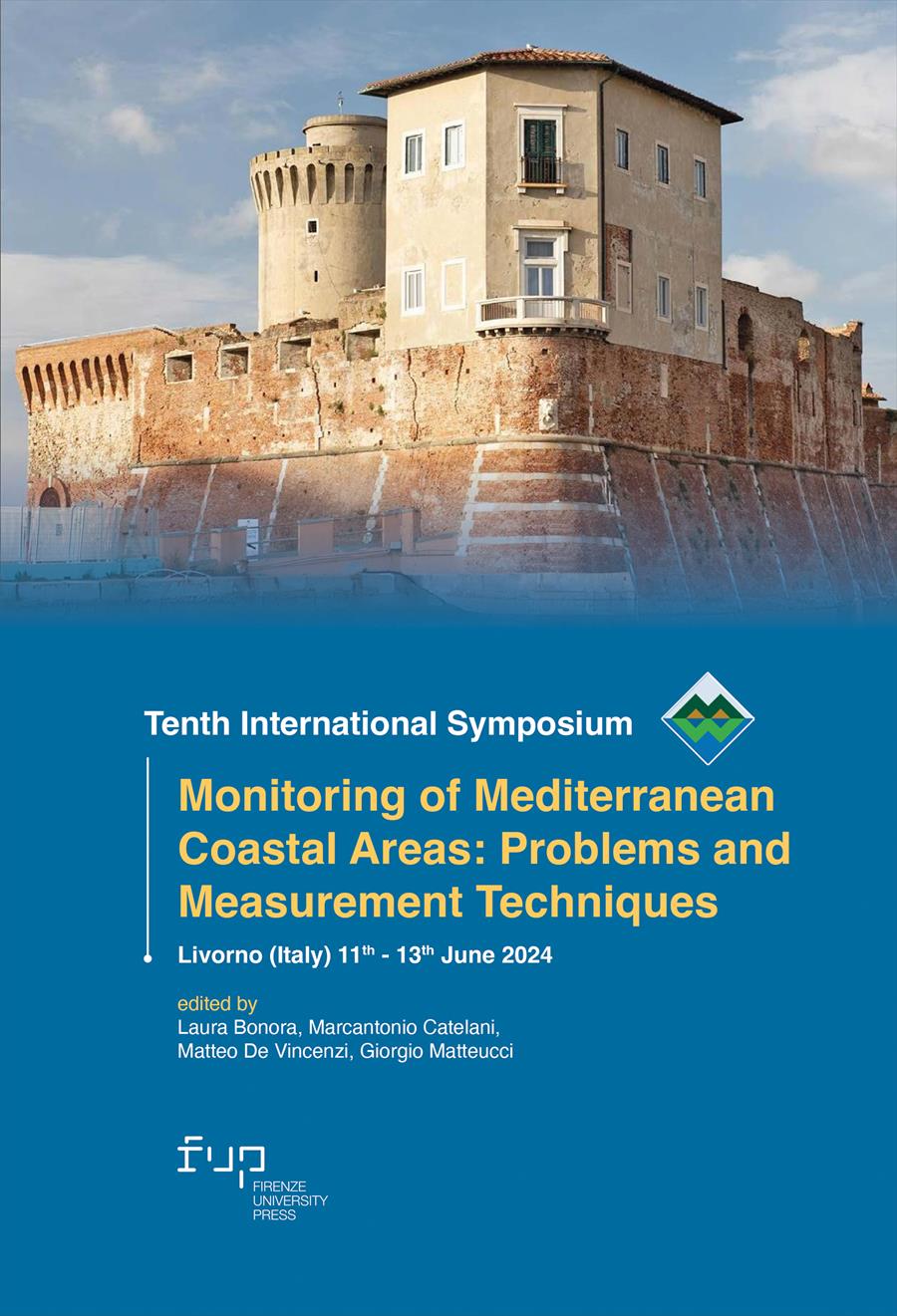- Tenth International Symposium "Monitoring of Mediterranean Coastal Areas: Problems and Measurement Techniques"
- Edited by Laura Bonora, Marcantonio Catelani, Matteo De Vincenzi, Giorgio Matteucci
The ESA Ulysses project and the exploitation in the Mediterranean area of Soil Sealing products and indicators
- Daniela Iasillo
- Vito De Pasquale
- Paola Di Lauro
- Sadri Haouet
- Amaury Truffier
- Loic Faucqueur
- Luca Congedo
- Michele Munafò
- Olivier Arino
- © 2024 Author(s) |
- CC BY-NC-SA 4.0
- DOI: 10.36253/979-12-215-0556-6.64
Soil sealing, a phenomenon altering soil permeability, significantly impacts the environment, particularly in urban areas and local climates, affecting heat exchange and soil permeability. Monitoring soil sealing is crucial for the Mediterranean coastal regions, where it contributes to desertification alongside soil degradation, drought, and fires.Permanent soil sealing includes features like buildings and paved roads, while reversible sealing involves features like solar panels and early-stage construction sites. The Mediterranean Soil Sealing project, led by Planetek Italia with partners ISPRA and CLS, aims to provide high-resolution maps of soil sealing and reversible sealing from 2018 to 2022, with a spatial resolution of 10 m. The project emphasizes stakeholder involvement, with users ranging from municipalities to international organizations like the UN. Efforts have been made to engage diverse stakeholders from the project's outset, and stakeholders are actively involved in shaping project outcomes. Instead of simply delivering maps, the project will provide users with an interactive dashboard containing indicators and analytics for easy access to information.
- Keywords:
- sealing,
- imperviousness,
- coastal areas,
- mediterranean,
Planetek Italia, Italy - ORCID: 0000-0003-2704-5658
Planetek Italia, Italy - ORCID: 0009-0009-9946-8044
Planetek Italia, Italy - ORCID: 0009-0006-2988-5238
CLS - Collecte Localisation Satellite, France
CLS - Collecte Localisation Satellite, France
CLS - Collecte Localisation Satellite, France - ORCID: 0009-0000-3361-6686
ISPRA - Italian Institute for Environmental Protection and Research, Italy - ORCID: 0000-0001-7283-116X
ISPRA - Italian Institute for Environmental Protection and Research, Italy - ORCID: 0000-0002-3415-6105
European Space Agency ESRIN, Italy
- Brauchler, M., Stoffels, J., & Nink, S. (2022). Extension of an Open GEOBIA Framework for Spatially Explicit Forest Stratification with Sentinel-2. Remote Sensing, 14(3), 727 DOI: 10.3390/rs14030727
- EEA. (2020). Technical specifications for implementation of a new land-monitoring concept based on EAGLE. Public Consultation document for CLC+ Core.
- EC–European Commission. (2023). Proposal for a Directive of the European Parliament and of the Council on Soil Monitoring and Resilience (Soil Monitoring Law). COM (2023), 416
- Gangkofner, U., Weichselbaum, J., Kuntz, S., Brodsky, L., Larsson, K., & De Pasquale, V. (2010). Update of the European high-resolution layer of built-up areas and soil sealing 2006 with Image2009 data. In 30th EARSeL Symposium (pp. 185-192).
- Merciol, F., Pham, M. T., Santana Maia, D., Masse, A., & Sannier, C. (2020). BROCELIANDE: a comparative study of attribute profiles and feature profiles from different attributes. The International Archives of the Photogrammetry, Remote Sensing and Spatial Information Sciences, 43, 1371-1377. DOI: 10.5194/isprs-archives-XLIII-B3-2020-1371-2020
- Pesaresi, M., & Gerhardinger, A. (2010). Improved textural built-up presence index for automatic recognition of human settlements in arid regions with scattered vegetation. IEEE Journal of Selected Topics in Applied Earth Observations and Remote Sensing, 4(1), 16-26. DOI: 10.1109/JSTARS.2010.2049478
- Peroni, F., Pappalardo, S. E., Facchinelli, F., Crescini, E., Munafò, M., Hodgson, M. E., & De Marchi, M. (2022). How to map soil sealing, land take and impervious surfaces? A systematic review. Environmental Research Letters, 17(5), 053005 DOI: 10.1088/1748-9326/ac6887
- Strollo, A., Smiraglia, D., Bruno, R., Assennato, F., Congedo, L., De Fioravante, P., ... & Munafò, M. (2020). Land consumption in Italy. Journal of Maps, 16(1), 113-123 DOI: 10.1080/17445647.2020.1758808
- Tobias, S., Conen, F., Duss, A., Wenzel, L. M., Buser, C., & Alewell, C. (2018). Soil sealing and unsealing: State of the art and examples. Land degradation & development, 29(6), 2015-2024 DOI: 10.1002/ldr.2919
- [UNEP/MAP. (2017). Integrated Monitoring and Assessment Programme of the Mediterranean Sea and Coast and Related Assessment Criteria.
Chapter Information
Chapter Title
The ESA Ulysses project and the exploitation in the Mediterranean area of Soil Sealing products and indicators
Authors
Daniela Iasillo, Vito De Pasquale, Paola Di Lauro, Sadri Haouet, Amaury Truffier, Loic Faucqueur, Luca Congedo, Michele Munafò, Olivier Arino
Language
Italian
DOI
10.36253/979-12-215-0556-6.64
Peer Reviewed
Publication Year
2024
Copyright Information
© 2024 Author(s)
Content License
Metadata License
Bibliographic Information
Book Title
Tenth International Symposium "Monitoring of Mediterranean Coastal Areas: Problems and Measurement Techniques"
Book Subtitle
Livorno (Italy) 11th-13th June 2024
Editors
Laura Bonora, Marcantonio Catelani, Matteo De Vincenzi, Giorgio Matteucci
Peer Reviewed
Publication Year
2024
Copyright Information
© 2024 Author(s)
Content License
Metadata License
Publisher Name
Firenze University Press
DOI
10.36253/979-12-215-0556-6
eISBN (pdf)
979-12-215-0556-6
eISBN (xml)
979-12-215-0557-3
Series Title
Monitoring of Mediterranean Coastal Areas: Problems and Measurement Techniques
Series E-ISSN
2975-0288
